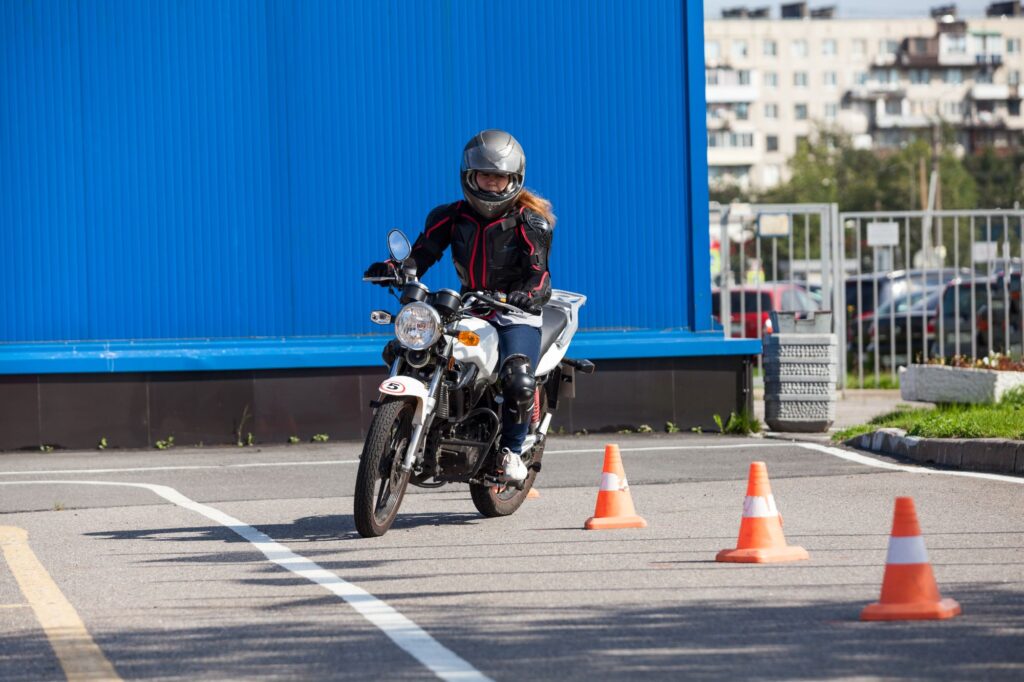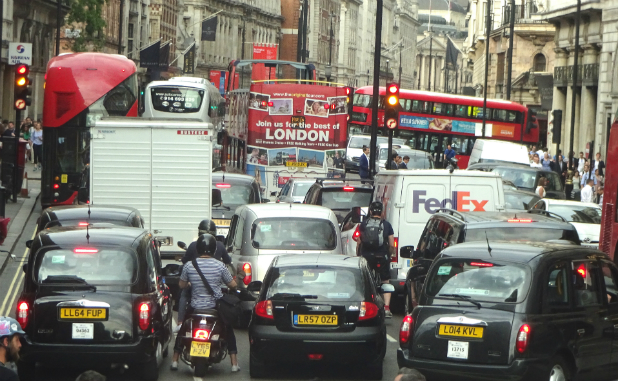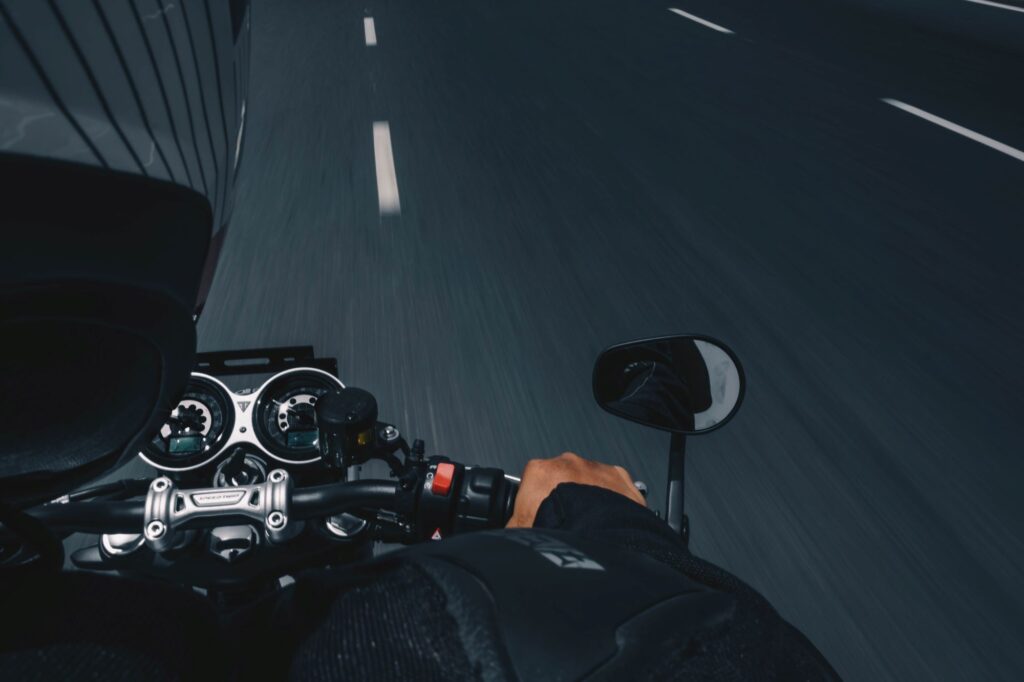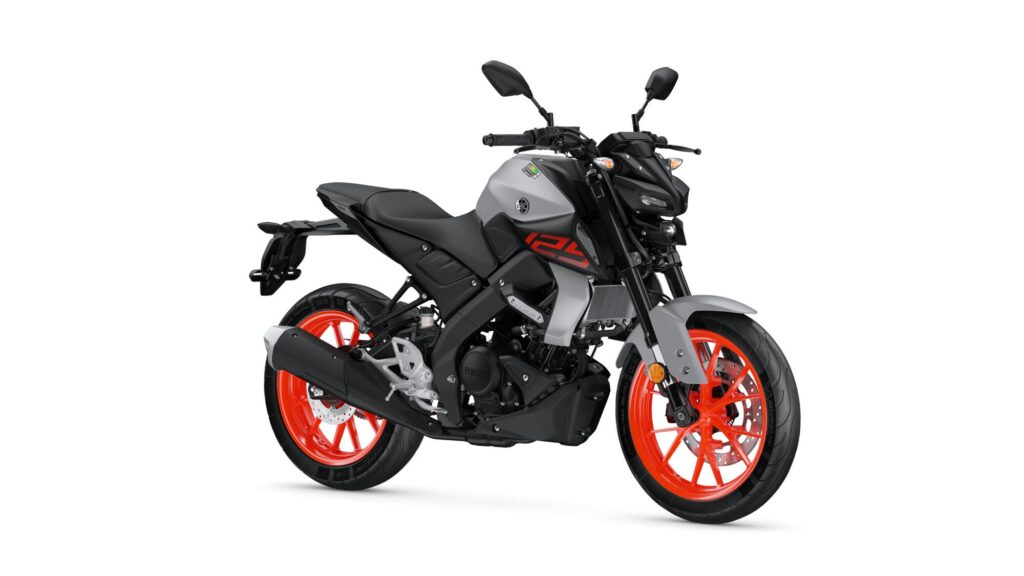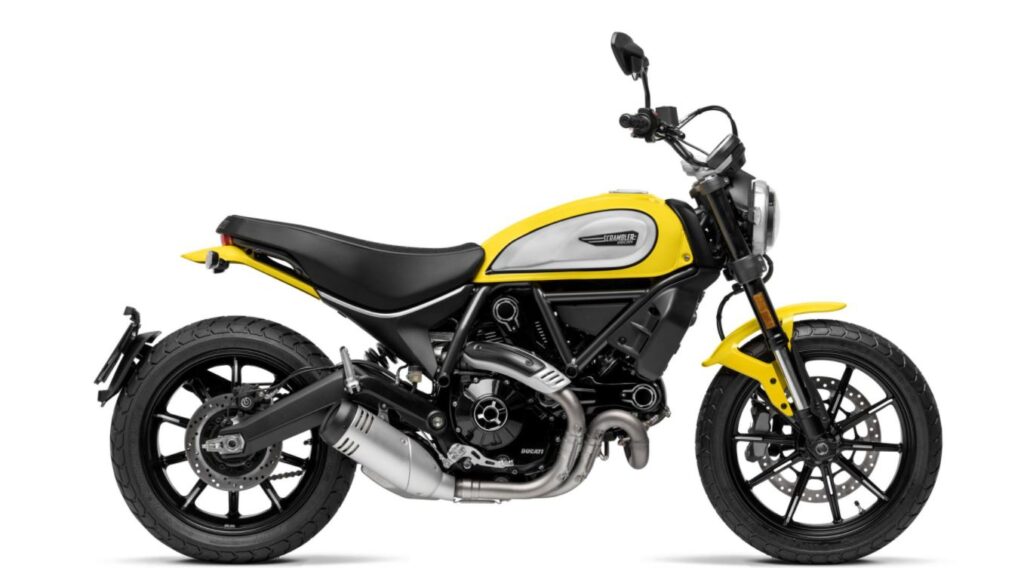Online vs real-world auctions
If you have ever bought anything on eBay, you already know what an auction is and the real-world event is very similar to the online version. Motorcycle auctions are sales where a number of bikes are brought to a single location and then sold individually to the highest bidder.
While on eBay you are only bidding on a photograph and description of something, at an auction the vehicles are on display before the event.
Why not just sell the bikes through a traditional motorcycle dealership?
There are two answers to this question.
1) High-end auctions
High-end auctions – such as the ones run by leading European auctioneer Bonhams – generally specialise in premium or rare machines that often have a high price tag. That said, Bonhams also sells lower priced bikes and motoring memorabilia alongside these top-end machines. If you want to sell it, Bonhams will put it under the hammer. But where do the bikes come from?

Buyers and sellers
Many of the bikes sold by Bonhams are from private collections where the collector has either passed away or simply wants to cash in on their investment.
Other lots arrive from individuals wanting to sell their bike or bikes and some machines are sold by enthusiasts who love to restore bikes and then sell them at the auction to fund the next project – it’s a wide mix of both buyers and sellers.
When it comes to buying and selling, you get a wider range of vehicles at an auction than any traditional dealership could afford to stock and that’s a major part of their draw.

At a high-end auction
An average Bonhams motorcycle auction will contain around 250 bikes and attracts a well-informed and enthusiastic audience who know what a bike is worth and are prepared to pay some pretty impressive figures if necessary.
Recently, for example, a 1948 Vincent-HRD Black Shadow Series-B sold for £113,500 during a Bonhams auction, while a 1937 Brough Superior combination sold for £85,500.

That said, a 1960 BSA Bantam also went for £1,150 in a Bonham’s auction last year (it was a bit rusty), so don’t be put off attending by the headline sales. The fact it costs £25 just to attend a Bonhams auction (the price of the catalogue, which doubles up as an entrance ticket for two people) also helps to ensure the audience are serious about their bikes and not tyre kickers.
Bonhams auctions aren’t frequent. The firm run two dedicated bike auctions in the UK every year in Stafford, however bikes are often sold alongside cars in various other overseas Bonhams auctions in locations such as Las Vegas and Paris.
2. Commercial auctions
Many companies – such as British Car Auctions (BCA) who are Europe’s biggest vehicle auction firm – are slightly less exclusive. BCA has 23 auction centres in the UK but mainly runs motorcycle auctions from its Peterborough site once a month.

Buyers and sellers
Where Bonhams gets its bikes from collectors and enthusiasts, BCA’s lots are generally from dealerships, ex-fleet vehicles (which can include ex-police or courier bikes) or repossessed through finance companies. An auction is a quick and easy way to get rid of motorcycles and, unlike dealerships, a finance company isn’t prepared to hold out to get the highest value possible, it just wants shot of them.
Often buyers are Europeans taking advantage of the weak pound
You do get private individuals selling through commercial auctions, but in general it is trade and that means modern motorcycles likes the ones you find in dealerships rather than classics.
If you are after a bargain modern bike, and are prepared to take a chance by buying with no warranty, a commercial auction is for you. It is for this reason that buyers tend to be in the motorcycle trade rather than enthusiastic collectors or private individuals and often buyers are from other European countries, taking advantage of the weak pound and exporting the bikes.
How an auction works – selling
Selling at a high-end auction
Ok, so you want to sell your classic bike through a Bonhams auction. After contacting the firm, Bonhams will ask for photographs of the bike, engine and frame numbers and details of how you came about the bike and how long you have owned it.
Research
They will then research the bike and come up with a suggested auction estimate, which is how much they feel it is going to make. This is basically a guide price and there is a good reason why they are often far lower than the bike will actually make: if it looks like a bargain, buyers will be encouraged to bid and once you start bidding…
Building the bike’s biography
If you are happy to continue, you also agree a reserve value, which is a minimum amount you will sell the vehicle for, and one of Bonhams’ dedicated catalogue specialists will construct an entry detailing the background on the bike to guide bidders as to why it’s worth buying.
This needs to include all the details that a buyer will be keen to know such as frame numbers, history, engine numbers, however they are not a guarantee that it runs and rides and that’s why prospective buyers are recommended to attend the sale.

Fees
Bonhams can arrange for the bike to be transported to the auction (for an extra fee) and you can also increase your bike’s publicity by paying a bit more for a better place in the auction catalogue. If the bike sells, Bonhams will take a 10% seller’s commission (plus VAT) on the hammer price, but if it doesn’t sell there is no commission fee.
The entrance fee to the catalogue ranges from £30 to £120, which is all you pay if the bike fails to sell for its reserve value.
Selling at commercial auction
Private individuals can sell through a commercial auction and BCA has a simple online form to guide you through the process. There are boxes to tick involving the condition of the bike and its history and a ‘Conditions of Entry and Sale’ that state it has no major mechanical defects.
As with Bonhams, BCA will do a bit of the legwork for you and put the bike’s details up on the online form so potential buyers can view it beforehand.

Fees
Fees vary from company to company, but, for example, BCA usually charge a flat fee rather than a percentage of the sale. For a single bike you can expect to pay in the region of £100 plus VAT.
It’s a sliding scale with multiple bikes helping reduce your costs. You can stick a reserve on the bike, but you will lose the fee if it doesn’t sell and, as with other auctions, the bike has to physically be at the auction.
On the day
Unlike Bonhams auctions, BCA will ride the bike across the sales room if it is mechanically sound and that means buyers get a chance to see and hear the vehicle in motion, so if you can get it running, it will help increase its value as no one likes to see a bike pushed across the block. You can also pay extra to get it valeted!

Don’t forget
If you are tempted to sell your bike through an auction, just remember, if it does sell there is no backing out as auction houses insist on having the vehicle’s logbook before the auction – when it’s gone it’s gone. However, if it doesn’t sell, that’s not necessarily the end of the story.
If the hammer falls and your bike hasn’t sold, don’t panic
If a bike fails to make its reserve, the auction house will often put the seller and the potential buyer (usually the last highest bidder) in contact at the event to try and get a compromise worked out. It’s in their interests to sell the vehicle as they get their commission, so if the hammer falls and your bike hasn’t sold, don’t panic, go and talk to the auction organisers.
How an auction works – buying
The hammer: legally binding
The first thing to understand about bidding in an auction is that it is ‘sold as seen’, ‘buyer beware’ and auctions give no guarantee about the vehicle so you can’t return it.
Also, when the hammer drops you have entered a legally binding agreement and that vehicle is yours and there is no backing out. It is for this reason that before you are given a bidding number you often need to provide evidence that you can afford the vehicle.
Inspect the lot
A key part of the auction is the fact that buyers can inspect the bike beforehand and while you aren’t allowed to attempt to start it, you can visually inspect it.
Canny buyers will also ask the employee riding the bike what it feels like
Bonhams will allow you to test things such as compression, which is a good guide to the motor’s health. At BCA auctions, vehicles that start are ridden into the showroom. This gives buyers a chance to hear it run and listen for worrying rattles. Canny buyers will also ask the employee riding the bike what it feels like…

To be or not to be (there)?
You don’t have to attend an auction in person and a lot of sales are done via the internet or telephone as auctions are often a global affair. But where’s the fun in that? You want to be in the heat of the battle and that means attending in person!
Bidding
Once in the auction, you simply show your bidding number to attract the attention of the auctioneer and keep showing it until the hammer drops or you decide that the price is too high and you drop out of the bidding.
This is the hard part! Being in an auction can be quite addictive and it is very easy to get swept up in the whole atmosphere and keep that bidding number raised. A lot of buyers set themselves fixed amounts they are prepared to go to – or bring a friend as a voice of reason!

The highest bidder
Should you ‘win’ a bike, you then need to pay for it and work out how to get it home. Auction houses are often prepared to store vehicles after the auction (at the buyer’s expense) and can also arrange delivery, again for a fee.
You can pay via debit card, credit card or cash, however there is often a cash limit. Bank transfers are also acceptable, however they can take a while to clear and therefore you may incur storage fees.
Not all commercial auctions are open to the public, so you need to contact the auction house in advance to make sure you can attend.
Auction houses also charge a buyer’s fee or buyer’s premium, which is often in the region of 15%, so it is worth checking how much it is and taking this into account before you bid.

Why go to an auction?
There are two main reasons people go to an auction: to bag a bargain or to rubber-neck and see what is happening in the market.
High-end auctions
If you are genuinely interested in investing in a motorcycle or collection, high-end auctions are a great gauge as to where the market is going and what style of vehicle is worth either investing in or selling. A few bargains may well pop up, but not as many as you may imagine and there is an old adage ‘you make your money when you buy, not when you sell’ which sums the mood up perfectly.
You make your money when you buy, not when you sell
Some bikes – such as British classics like a Vincent or Brough – will ‘always’ go up in value. However, recent times have seen prices of the modern classics such as the Ducati 916 and original Honda FireBlade spiking. If you can predict a trend and buy before it kicks in, that’s where you make your money.

Commercial auctions
These are a different prospect and buyers generally attend them in the hope of snapping up a cheap bike to then sell on. There is a risk attached as it is ‘sold as seen’, but more often than not the bikes sold are ex-fleet or finance vehicles and therefore relatively new. There are a few old bangers, which dealerships have accepted as trade-ins and just want to get rid of, but these stand out a mile and you know what you’re getting into.
The cool thing about any auction is that just as in a dealership, if you do buy a bike you can actually ride it home that day – provided it is road legal and insured – so bring your riding kit with you as well as your wallet!

